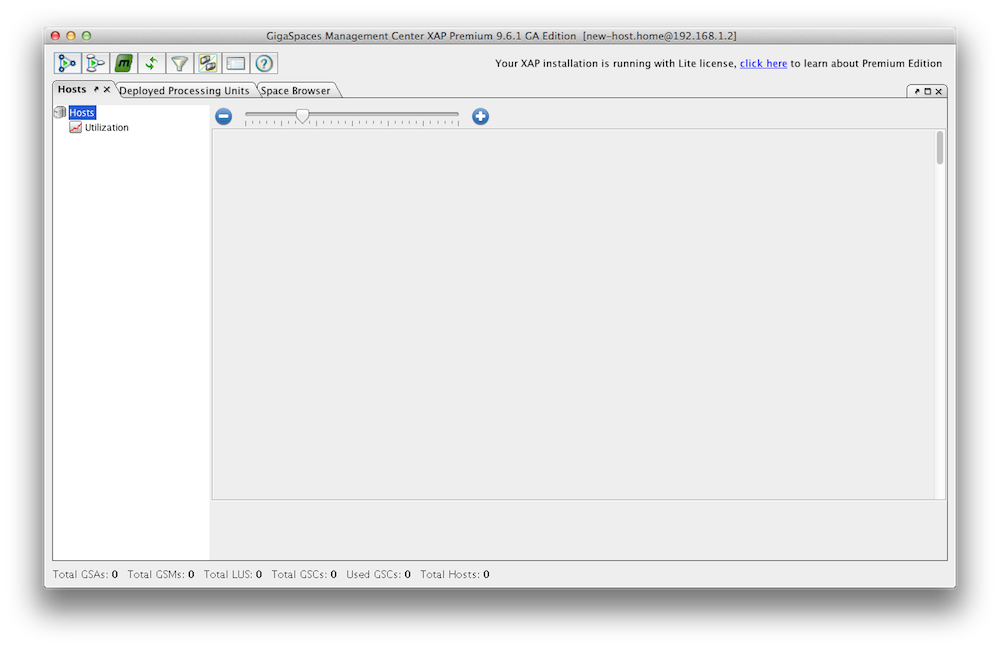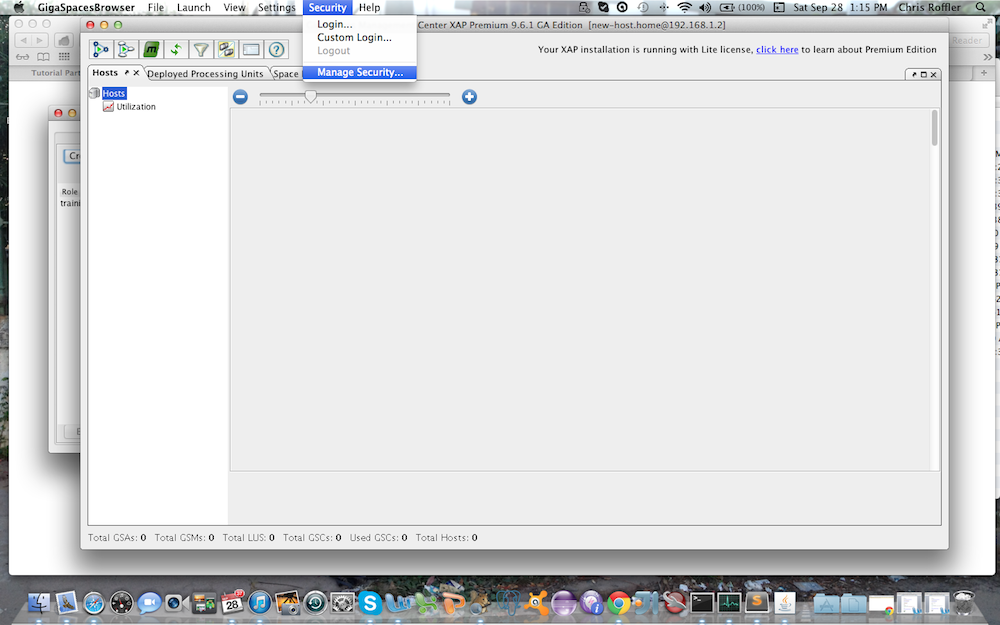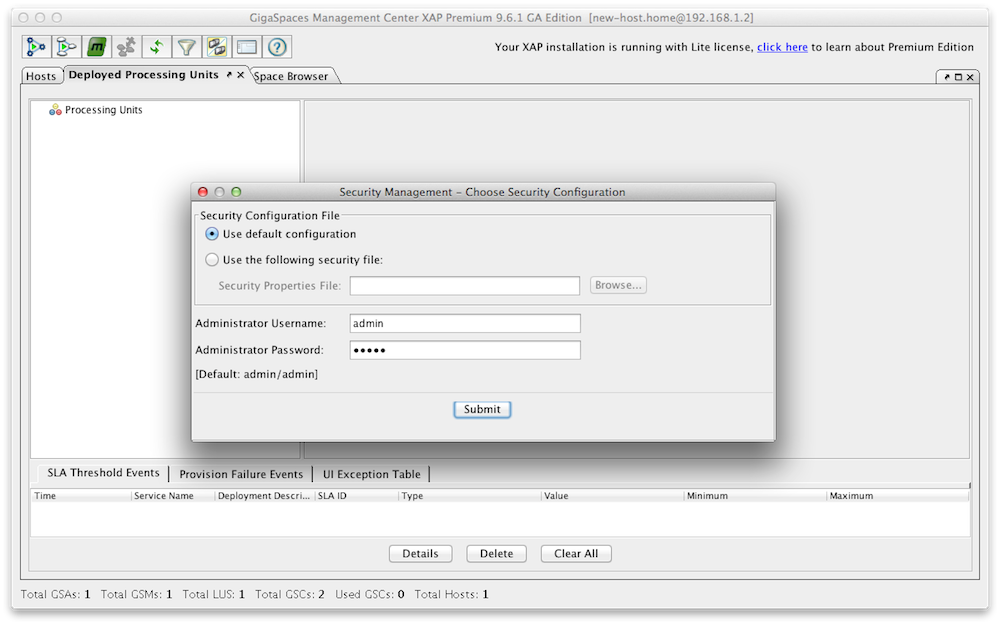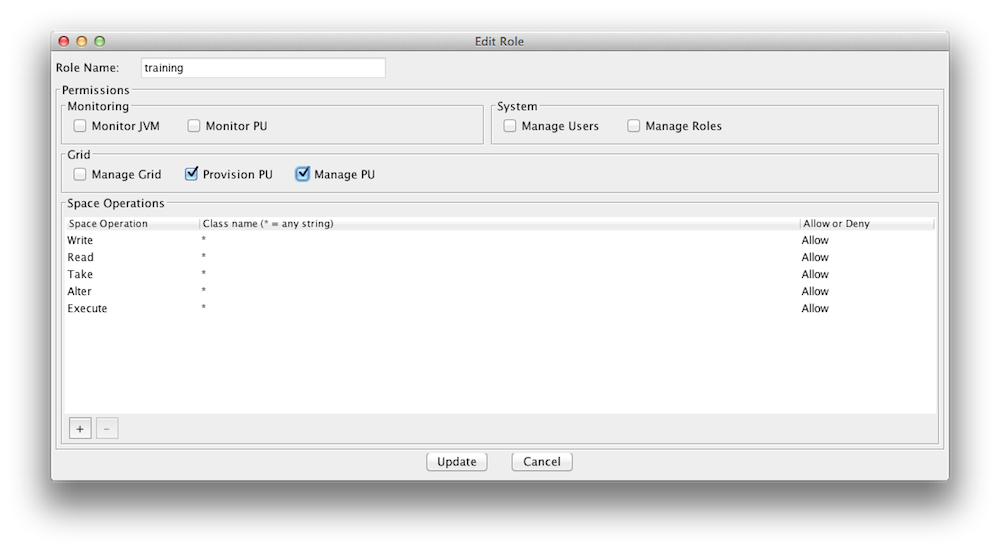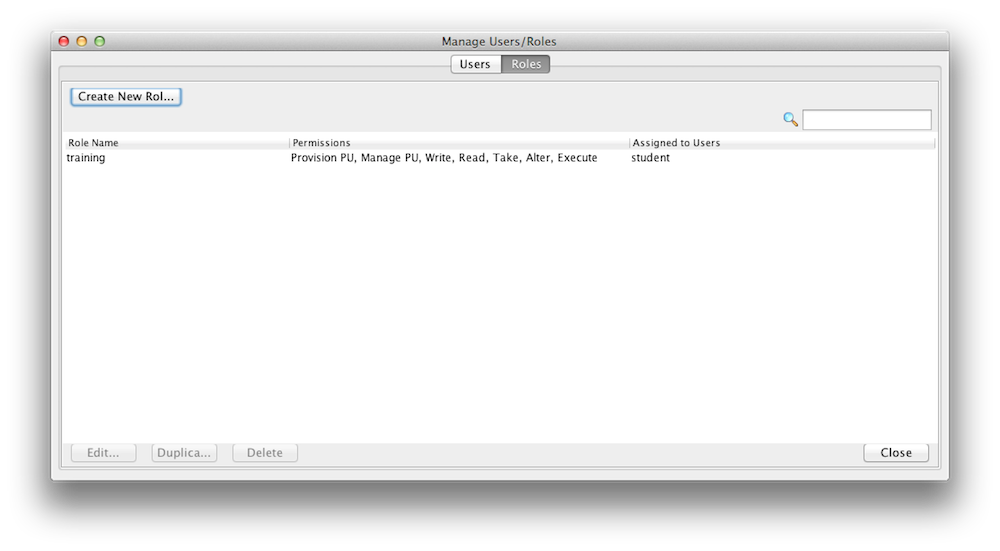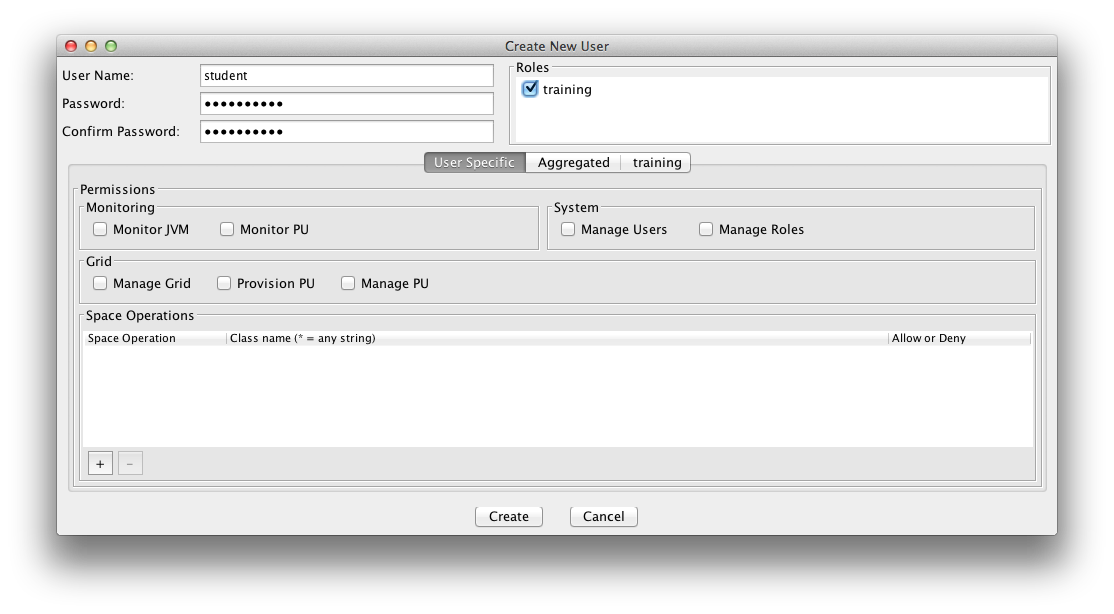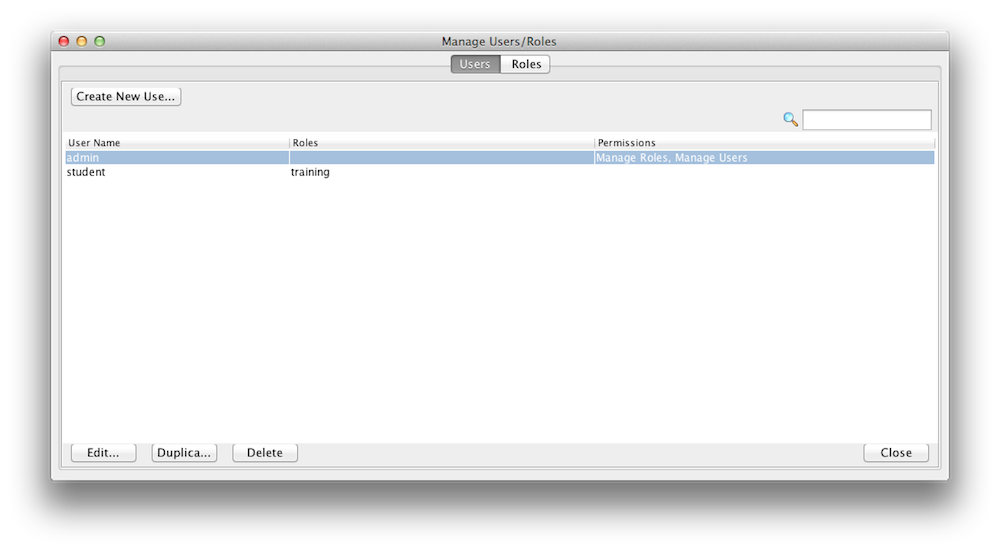Security for XAP Service Grid
This is an introduction to data grid security, where it fits in the data grid architecture, which components can be secured, and how to configure and customize the security depending on your application security requirements. Data grid Security provides comprehensive support for securing your data and services.
Some security features are part of the open source edition, while others are only available with the commercial (licensed) editions.
Securing Data Grid Components
This security feature is only available with the commercial (licensed) editions.
Data grid has security built over the major component, GSA![]() Grid Service Agent.
This is a process manager that can spawn and manage Service Grid processes (Operating System level processes) such as The Grid Service Manager, The Grid Service Container, and The Lookup Service. Typically, the GSA is started with the hosting machine's startup. Using the agent, you can bootstrap the entire cluster very easily, and start and stop additional GSCs, GSMs and lookup services at will., GSM
Grid Service Agent.
This is a process manager that can spawn and manage Service Grid processes (Operating System level processes) such as The Grid Service Manager, The Grid Service Container, and The Lookup Service. Typically, the GSA is started with the hosting machine's startup. Using the agent, you can bootstrap the entire cluster very easily, and start and stop additional GSCs, GSMs and lookup services at will., GSM![]() Grid Service Manager.
This is is a service grid component that manages a set of Grid Service Containers (GSCs). A GSM has an API for deploying/undeploying Processing Units. When a GSM is instructed to deploy a Processing Unit, it finds an appropriate, available GSC and tells that GSC to run an instance of that Processing Unit. It then continuously monitors that Processing Unit instance to verify that it is alive, and that the SLA is not breached., GSC
Grid Service Manager.
This is is a service grid component that manages a set of Grid Service Containers (GSCs). A GSM has an API for deploying/undeploying Processing Units. When a GSM is instructed to deploy a Processing Unit, it finds an appropriate, available GSC and tells that GSC to run an instance of that Processing Unit. It then continuously monitors that Processing Unit instance to verify that it is alive, and that the SLA is not breached., GSC![]() Grid Service Container.
This provides an isolated runtime for one (or more) processing unit (PU) instance and exposes its state to the GSM. and Processing Unit
Grid Service Container.
This provides an isolated runtime for one (or more) processing unit (PU) instance and exposes its state to the GSM. and Processing Unit![]() This is the unit of packaging and deployment in the GigaSpaces Data Grid, and is essentially the main GigaSpaces service. The Processing Unit (PU) itself is typically deployed onto the Service Grid. When a Processing Unit is deployed, a Processing Unit instance is the actual runtime entity. with Space
This is the unit of packaging and deployment in the GigaSpaces Data Grid, and is essentially the main GigaSpaces service. The Processing Unit (PU) itself is typically deployed onto the Service Grid. When a Processing Unit is deployed, a Processing Unit instance is the actual runtime entity. with Space![]() Where GigaSpaces data is stored. It is the logical cache that holds data objects in memory and might also hold them in layered in tiering. Data is hosted from multiple SoRs, consolidated as a unified data model. data. Each one of these components can be configured according to your application security requirements.
Where GigaSpaces data is stored. It is the logical cache that holds data objects in memory and might also hold them in layered in tiering. Data is hosted from multiple SoRs, consolidated as a unified data model. data. Each one of these components can be configured according to your application security requirements.

For information about Authentication, Authorization and Security Roles (Privileges) refer to the Security Overview page.
Managing Roles - FSM Based Security (GS-UI)
This security feature is only available with the commercial (licensed) editions.
FSM based security, is NOT the default security in Service Grid![]() A built-in orchestration tool which contains a set of Grid Service Containers (GSCs) managed by a Grid Service Manager. The containers host various deployments of Processing Units and data grids. Each container can be run on a separate physical machine. This orchestration is available for XAP only. orchestration
A built-in orchestration tool which contains a set of Grid Service Containers (GSCs) managed by a Grid Service Manager. The containers host various deployments of Processing Units and data grids. Each container can be run on a separate physical machine. This orchestration is available for XAP only. orchestration![]() This is the automated configuration, management, and coordination of computer systems, applications, and services. Orchestration strings together multiple tasks in order to execute and easily manage a larger workflow or process. These processes can consist of multiple complex tasks that are automated and can involve multiple systems. Kubernetes, used by GigaSpaces, is a popular open source platform for container orchestration.. The default is spring based security.
This is the automated configuration, management, and coordination of computer systems, applications, and services. Orchestration strings together multiple tasks in order to execute and easily manage a larger workflow or process. These processes can consist of multiple complex tasks that are automated and can involve multiple systems. Kubernetes, used by GigaSpaces, is a popular open source platform for container orchestration.. The default is spring based security.
You can create new roles and users with a configuration file or with the Admin UI. Here is an example how you use the Admin UI to create/update roles. Lets create a role called "training" that can access and interact with our xapTutorialSpace, but does not have monitoring authority. Start the Admin UI:
GS_HOME\bin\gs-ui.sh
The default username and password for the security are admin/admin.
|
Start GigaSpaces Management Center |
Select Security options |
Log in |
Create a Role |
Display Roles |
You may have noticed that you can assign fine grained access control for space operations (read/write/etc) per space class(slide 4).
For more information, see the GigaSpaces Management Center page in the Administration guide.
Managing Users and Roles - File Based Security (GS-UI)
This security feature is only available with the commercial (licensed) editions.
File based security, is NOT the default security in Service Grid orchestration. The default is spring based security.
A user is assigned roles. You can create new roles and users with a configuration file or with the Admin UI. Here is an example how you use the Admin UI to create/update users. Lets create a user called student and assign the role training we have just created in the step above. A user can have multiple roles.
|
Log in |
Create User |
Display Users |
You can create Users and Roles via the API. Here is an example:
public void createUser() {
Properties securityProperties = new Properties();
SecurityManager securityManager = SecurityFactory
.createSecurityManager(securityProperties);
directoryManager = securityManager.createDirectoryManager(new User(
"admin", "admin"));
// Create a new Role
this.createRole();
// Create the User
User user = new User("student", "student123", new RoleAuthority("training"));
// Register the new User
UserManager userManager = directoryManager.getUserManager();
userManager.createUser(user);
}
private Role createRole() {
RoleManager roleManager = directoryManager.getRoleManager();
Role role = new Role("training",
new SpaceAuthority(SpacePrivilege.READ),
new SpaceAuthority(SpacePrivilege.WRITE),
new SpaceAuthority(SpacePrivilege.TAKE));
roleManager.createRole(role);
return role;
}
For more information, see the GigaSpaces Management Center page in the Administration guide.
How to Access a Secured Space
A secured embedded Space protects access (to data) which is granted only to users with sufficient privileges. Here is an example how to create a secure space with no internal services:.
EmbeddedSpaceConfigurer configurer = new EmbeddedSpaceConfigurer("xapTutorialSpace").secured(true);
GigaSpace gigaSpace = new GigaSpaceConfigurer(configurer).gigaSpace();
<os-core:embedded-space id="space" space-name="xapTutorialSpace">
<os-core:security secured="true" />
</os-core:space>
When a remote Space proxy connects to a secured Space, it must provide security credentials (username and password).
public void setupSpace()
{
SpaceProxyConfigurer configurer = new SpaceProxyConfigurer("xapTutorialSpace").credentials("student", "password");
GigaSpace gigaSpace = new GigaSpaceConfigurer(configurer).gigaSpace();
}
<os-core:space-proxy id="space" space-name="xapTutorialSpace">
<os-core:security username="student" password="student123" />
</os-core:space-proxy>
For more information, see the Securing the Data Layer page in the Security section of the Administration guide.
Grid Security
Grid Security is enabled in data grid by setting a global system property. This system property can be set when using the deployment scripts, or it can be appended in the setenv.sh/bat script in the GS_HOME/bin directory. Once the Grid Security is enabled, you can use the predefined roles and user names to protect and control the grid access.
-Dcom.gs.security.enabled=true
This property affects the GSA, GSM, GSC and standalone PU![]() This is the unit of packaging and deployment in the GigaSpaces Data Grid, and is essentially the main GigaSpaces service. The Processing Unit (PU) itself is typically deployed onto the Service Grid. When a Processing Unit is deployed, a Processing Unit instance is the actual runtime entity. instances with a space.
This is the unit of packaging and deployment in the GigaSpaces Data Grid, and is essentially the main GigaSpaces service. The Processing Unit (PU) itself is typically deployed onto the Service Grid. When a Processing Unit is deployed, a Processing Unit instance is the actual runtime entity. instances with a space.
For more information, see the Securing the Grid Services page in the Security section of the Administration guide.
Transport Security
The transport layer can be secured using an SSL communication filter.
For more information, see the Securing the Transport Layer page in the Security section of the Administration guide.
 In-Memory Data Grid - achieve unparalleled speed, persistence, and accuracy.
In-Memory Data Grid - achieve unparalleled speed, persistence, and accuracy.